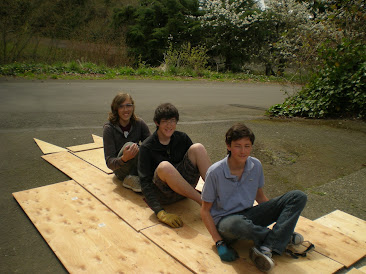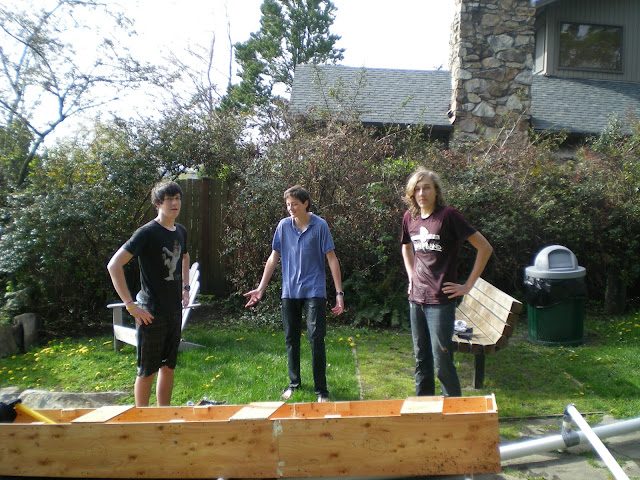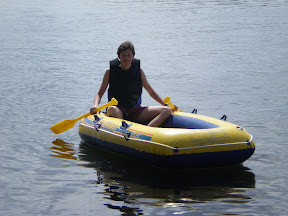Welcome to my blog! This is a bit of an outlet to post all my little (or big) projects. I hope you enjoy what you see!
2023-02-01
Spalted Maple Bedside Table
2023-01-01
Quick and Dirty Boat Building Competition 2009
Greetings friends,
This post is a blast-to-the-past for an event I participated in during my junior and senior years of high school. The Quick and Dirty Boat Building Competition (QDBBC) was a staple of the Seattle Maritime Festival in the late 2000s/early 2010s though unfortunately it appears as though this event no longer takes place during the festival, with the last promotional materials available online from 2012.
In the last years of high school, I was a member of our school's Materials Science Club. We decided in 2009 to enter that year's QDBBC as a 3-person team. The basic idea of the competition was to build a seaworthy boat within 6 hours on a materials budget of $100 and subsequently race the boat against the other competitors. All teams were allowed an additional $100 to test-build their boat before the competition to make sure the designs were feasible.
We decided early in the process to draw inspiration from racing shells, specifically their long and narrow design targeted at higher top speed over maneuverability. With the three of us seated along the length of the boat, we'd each be able to use 2 "oars" to propel ourselves. Here is a CAD model I created at the time as a draft of the general design:
After digging through some old photos, I surprisingly found a scanned image of the receipts from when we purchased our materials. For those of you reading this in 2023, it may seem impossible to buy all these materials for under $100, but things were way different in 2009! The plywood sheet was made into the body of the boat, the PVC pipe was crafted into pontoons and oars, and the 2x4s were primarily used for structural support.
We constructed our test boat at one of our team member's houses because of the proximity to Lake Washington, where we planned to make our maiden voyage. Surprisingly, we documented the construction quite thoroughly with tons of photos and some videos from that day, from which I'll share a selection below. I'll post them chronologically, in an effort to make the assembly process easier to visualize. Click on any of the photos to see a full-size version!
The changes we made between the first CAD prototype and this test run are pretty subtle, with the biggest change being from a blunt bow to a pointed one. The cheap lumber we used necessitated a lot of expanding foam to fill the gaps, but we were still well under budget. At the end of construction, we were very eager to get into the water! Luckily it was a reasonably warm spring day, because things didn't quite go as planned (see video below)...
After a dip in the lake, we realized that our pontoons were not as structurally sound as we had hoped. As is hopefully visible in the photo above of the pontoons, the PVC pipe was screwed onto the hull from the top, meaning that only 6 drywall screws were carrying our combined weight when in the water. We learned our lesson, and later revised our design to prevent this failure from happening again.
Thanks for reading,
Juju
































